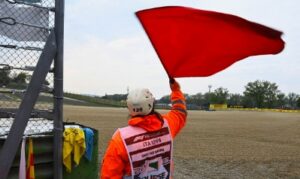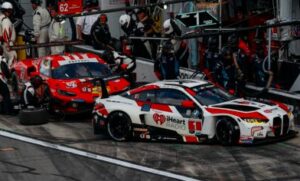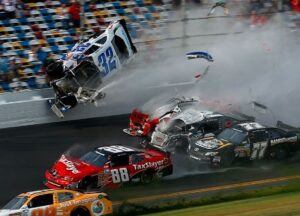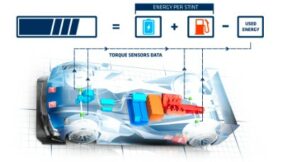The Lifesaving Role of Roll Cages in Motorsports: A Tale of Safety
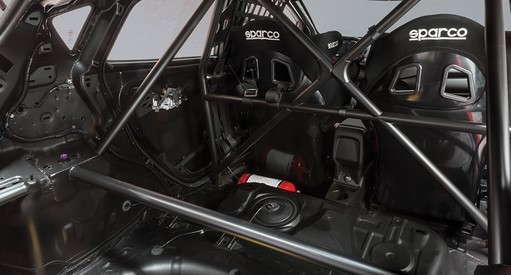
In the adrenaline-fueled world of motorsports, speed and precision often take center stage. However, amidst the roar of engines and the thrill of competition, an unsung hero plays a pivotal role in ensuring the safety of drivers—the roll cage. This comprehensive exploration delves into the critical significance of roll cages, with a special nod to the Thunderbird Speedway, in saving lives on the racetrack.
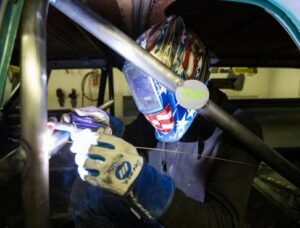
The Anatomy of a Roll Cage
A roll cage is a complex, interconnected structure designed to protect drivers in the event of a rollover or collision. Typically constructed from high-strength steel or aluminum tubing, the roll cage surrounds the driver’s compartment, creating a protective cage-like structure. The effectiveness of these cages lies not just in their strength but in their ability to absorb and dissipate energy during impact.
The Evolution of Roll Cage Design
The evolution of roll cage design has been a dynamic process driven by continuous advancements in materials and engineering. From the early days of motorsports, where roll bars provided rudimentary protection, modern roll cages are sophisticated structures designed with precision and a deep understanding of crash dynamics.
Thunderbird Speedway: A Testament to Safety
The Thunderbird Speedway stands as a testament to the commitment to safety in motorsports. Nestled in the heart of racing culture, this iconic speedway has witnessed the evolution of safety measures, including the implementation of state-of-the-art roll cages. The Thunderbird Speedway’s dedication to prioritizing driver safety contributes to its reputation as a leader in responsible and thrilling racing events.
The Role of Roll Cages in Rollover Accidents
Rollover accidents are a significant concern in motorsports, given the high speeds and close-quarters racing inherent in many competitions. Roll cages play a crucial role in preventing catastrophic injuries during these incidents. By providing a protective barrier around the driver’s compartment, roll cages help to mitigate the forces exerted on the occupant and reduce the risk of injury.
Energy Absorption and Dissipation
One of the key features of an effective roll cage is its ability to absorb and dissipate energy. In the event of a crash, the roll cage deforms to absorb the impact forces, preventing those forces from reaching the driver. This controlled deformation is a delicate balance, ensuring that the structure remains strong enough to protect the driver while effectively managing the energy generated during a crash.
Crash Testing and Certification
Modern roll cages undergo rigorous crash testing to ensure their effectiveness in real-world scenarios. Various motorsports organizations, including those governing Thunderbird Speedway events, often have strict regulations regarding roll cage specifications. Certification processes involve subjecting the roll cage to simulated crashes, evaluating its performance under different impact conditions.
Comprehensive Driver Enclosure
Beyond rollover protection, roll cages contribute to creating a comprehensive driver enclosure. This enclosure shields drivers from debris and external forces, reducing the risk of injuries in collisions. The structural integrity of the roll cage ensures that the driver’s compartment remains a relatively secure space, even in the most challenging situations.
Importance of Proper Installation
While the design and materials of a roll cage are critical, proper installation is equally paramount. The roll cage must be securely mounted to the chassis, and its attachment points should be strategically reinforced. A flaw in installation could compromise the effectiveness of the roll cage, underscoring the importance of skilled professionals in ensuring safety standards are met.
Roll Cages in Various Motorsports Disciplines
Roll cages are ubiquitous across various motorsports disciplines, from stock car racing to open-wheel competitions. Each discipline presents unique challenges, and roll cage designs are often tailored to address the specific dynamics of the vehicles involved. The adaptability of roll cages highlights their versatility in safeguarding drivers across diverse racing environments.
Human Factors and Ergonomics
Consideration of human factors and ergonomics is crucial in roll cage design. Drivers need to be able to enter and exit the vehicle quickly, especially in emergency situations. Additionally, the placement of structural elements must not hinder visibility or impede the driver’s ability to operate the vehicle effectively.
The Psychological Impact on Drivers
The knowledge that a robust roll cage surrounds them can have a psychological impact on drivers. Feeling secure within the protective confines of the roll cage allows drivers to focus on their performance without constant worry about the inherent risks of high-speed racing. This psychological reassurance contributes to a conducive environment for peak performance on the track.
Continuous Improvement and Innovation
Motorsports safety is an evolving field, and roll cage design is no exception. Continuous improvement and innovation are at the forefront of ensuring that safety measures keep pace with the ever-increasing speeds and complexities of modern racing. Engineers and safety experts collaborate to refine roll cage designs and incorporate cutting-edge materials and technologies.
Real-Life Examples of Roll Cage Effectiveness
The real-life effectiveness of roll cages is evident in numerous instances where drivers have walked away from high-impact crashes. These anecdotes underscore the importance of investing in robust safety measures. Whether it’s a spectacular flip on a dirt track or a collision on the asphalt, the roll cage remains a beacon of protection for motorsports athletes.
The Global Impact of Motorsports Safety
Motorsports safety, including the role of roll cages, has a global impact. Safety standards established by international motorsports organizations influence not only professional racing circuits but also grassroots racing communities. The dissemination of safety knowledge and practices contributes to a collective effort to minimize the inherent risks associated with high-speed racing.
Conclusion
In the fast-paced and exhilarating world of motorsports, the silent guardian ensuring the safety of drivers is the roll cage. From Thunderbird Speedway to international racing circuits, these structures are not just pieces of metal. They are the embodiment of a commitment to preserving lives. Technology and engineering continues to advance. The roll cage stands as a testament to the harmonious blend of speed and safety. This, ensuring that the thunderous roar of engines is accompanied by the reassuring protection of a well-designed cage.

